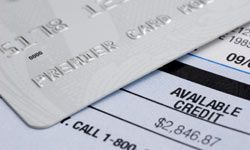Can you imagine having no debt? What kinds of decisions come with each paycheck when you owe nothing? Your savings account is bursting at the seams, so you can add some more to the world travel budget. But wait, that budget is set for two years of travel already. Your time volunteering and visiting the orphanage you helped fund in Haiti will happen when the kids are on school break, so maybe it's time to put a paycheck or two into the business you've always wanted to start. That could even add money to your money and set up the family for when you're gone. No worries.
This kind of dreaming doesn't have to be a dream. Whether you're in a stage of life where college planning is central, retirement is imminent, or marriage and joint accounts are calendar days away, being debt-free is possible.
Advertisement
Instead of dreams of running away from it all and cracking coconuts on a deserted beach, take a few minutes to think about how you really want to live -- maybe with electricity and some great vacations -- and see how you can get started today.



